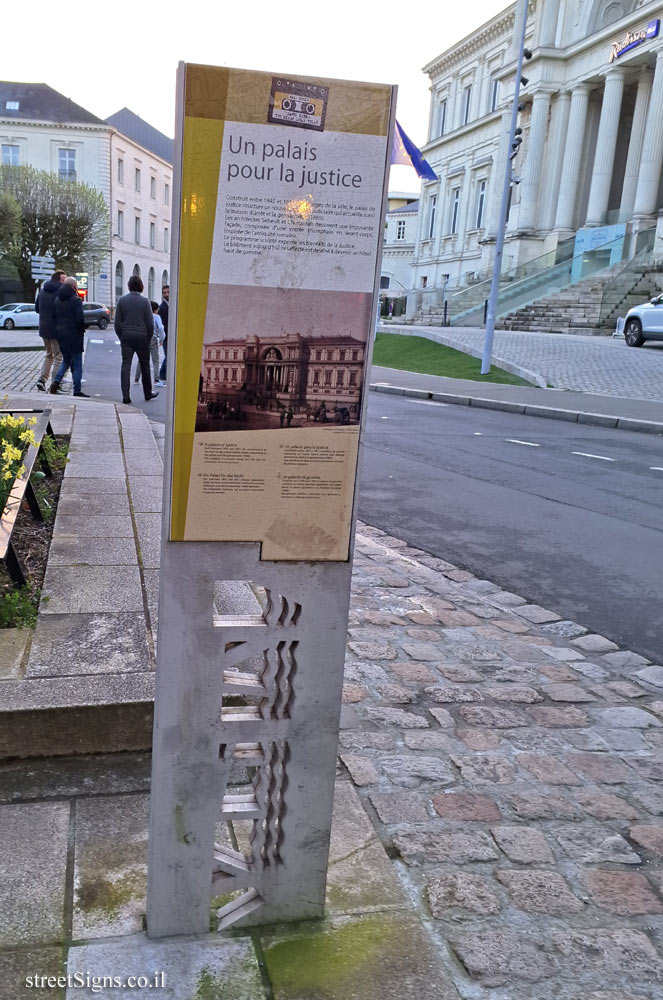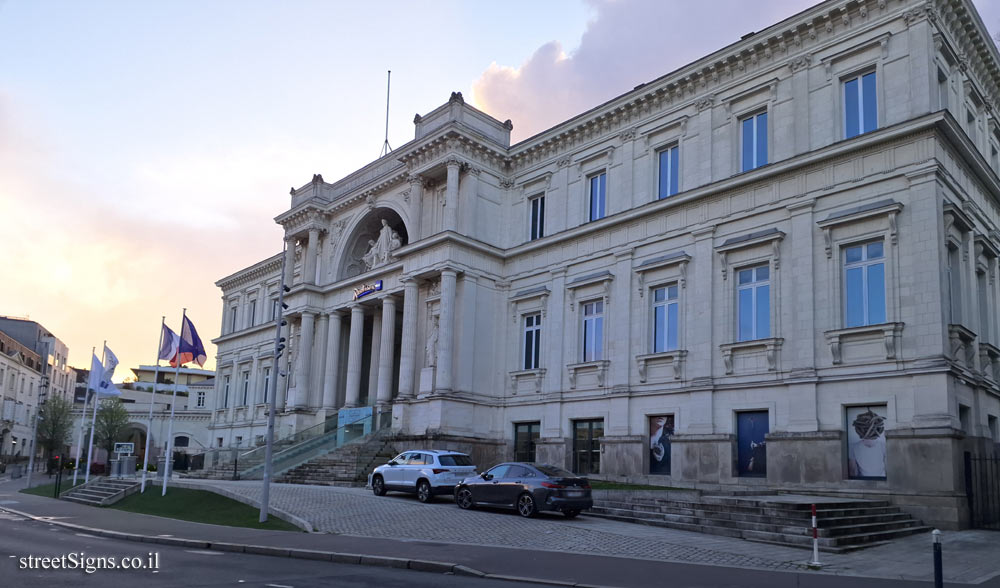The sign depicts the old court of Nantes which was also used as a prison.
On the sign there is information about the place in French (in detail) as well as in the following languages: English, German, Spanish and Italian.
The building was designed by the architects: Saint-Félix Seheult and Joseph-Fleury Chenantais
At the bottom of the page on which the sign is placed, the branding of the city of Nantes appears.
The sign was photographed in its entirety on the same day
 Click for a larger image
Click for a larger image The place was photographed on the same day
 Click for a larger image Translation of the text on the sign
Click for a larger image Translation of the text on the sign:
[Translation of the detailed French text]
A palace for justice
Built between 1845 and 1851 on the outskirts of the city, the courthouse structures a new judicial district which also houses the remand center and the gendarmerie (1869)
The architects Seheult and Chenantais designed an imposing facade, composed of a triumphal entrance in front, inspired by Roman antiquity.
The sculpted program expresses the benefits of Justice.
The now disused building is intended to become a high-end hotel.
Architects:S-F.Seheult, J-F.Chenantais
Sculptors: E.Suc, A. Ménard
Learn about:

 Click for a larger image
Click for a larger image  Click for a larger image
Click for a larger image